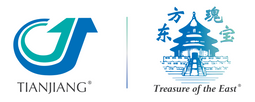The Importance of Pao Zhi: Gan Cao & Mi Gan Cao
We're often asked if the different Pao Zhi processing methods make a significant difference in how each herb should be used. This question is best answered with an example, and so Dr. Ann Wang has prepared a brief breakdown of the differences between Gan Cao and Mi Gan Cao.
Illustrating the Difference Between Gan Cao and Mi Gan Cao
In clinical practice, Gan Cao or Sheng Gan Cao (raw licorice) is commonly used for clearing away heat while Mi Gan Cao (honey-processed licorice) is mostly used to invigorate qi. Mi Gan Cao is also known as cooked licorice, processed licorice, Zhi Gan Cao, Mi Zhi Gan Cao, or Gan Cao (Mi). Although the two forms are made from the same botanical, there are many differences between them.
Differences in Preparation
Gan Cao is produced by washing and soaking the licorice root, cutting it into slices, before decoction and extraction. In contrast, Mi Gan Cao is produced by mixing raw licorice slices with honey, frying the mixture until it is no longer sticky, then drying before extraction or decoction. 
Gan Cao and Mi Gan Cao can be visually distinguished by their shape and color. Gan Cao is sliced diagonally, with a large cut surface, and a pale brown color. Mi Gan Cao is typically cut into smaller round or oval slices. Mi Gan Cao is reddish brown or grayish brown and slightly shiny. It's cut surfaces are yellow to dark yellow, with an obvious cambium ring is obvious and a radiating shape.
Different Effects
Cooking changes the properties of herbs. In particular, the coldness of raw herbs tend to be reduced by cooking. When cooked with honey, the herb becomes warm and it's tonification properties are enhanced.
Gan Gao is a neutral herb with some cold properties that is commonly used for clearing away heat and detoxification. It has the effect of relieving abdominal pain, invigorating the middle and replenishing qi, eliminating phlegm, relieving cough, and reconciling formula properties. Of the two preparations, Gan Cao is the only option for clearing away heat and detoxification, and is used in formulas like Chai Ge Jie Ji Tang.
Mi Gan Cao is warming and has a stronger tonifying effect. It tends to invigorate qi, relieve pain, moisturize, and rejuvenate the lungs. It also boosts Yang and supplements qi. Other effects include invigorating the spleen and stomach, replenishing qi and rejuvenating the pulse. Mi Gan Cao is used in Sheng Mai San to great effect.
Different Applications and Dosages
Gan Cao is most commonly used for conditions such as swelling and sore throat, food poisoning, acute pain of limbs, and to relieve toxicities. The raw herb dosage is typically 3-9 gram, but can be as large as 30-60 grams under the care of a very experienced practitioner.
Mi Gan Cao is traditionally used to tonify the lungs and reduce cough. It's also used for deficiency of spleen and stomach, loose stools, fatigue, heart palpitations, and pulse irregularities. The raw herb dosage is typically 1.5-9 grams.
From this illustration, we can see a clear distinction between Gan Cao and Mi Gan Cao. The application of these two forms of licorice is significantly different, and so these herbs should not be treated as substitutes for each other without appreciation of their unique functions and properties.
While not all Pao Zhi processes result in such profound changes, choosing the right preparation of an herb for your patients' needs will help you achieve your intended results. We hope this and our other resources on Pao Zhi will help you prescribe with confidence!
-
The information in this article is not intended or implied to be a substitute for professional medical advice, diagnosis or treatment, and is intended for only licensed healthcare practitioners.



















